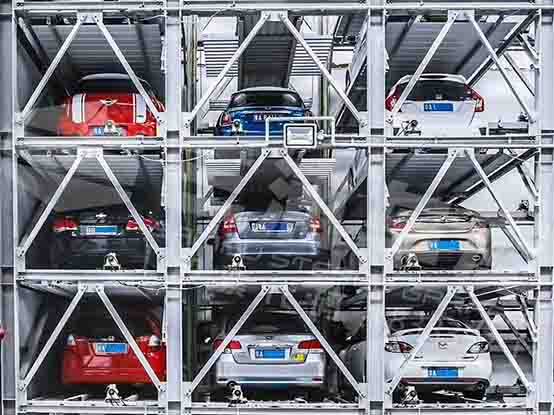
- Home
- Profile of Sampu
- Garage type
- Classic cases
- Manufacturing strength
- News and information
- Contact us
Three-dimensional Parking Lot is not widely popular at present, but the phenomenon of parking difficulty is not unique to China. Some developed countries have already experienced such pain, but they can pay attention in a timely manner and take strong measures to effectively alleviate or solve the problem of parking difficulty. For example, the solution to urban parking difficulties in the United States mainly relies on "matching construction", which means that parking spaces must be built according to corresponding standards while constructing buildings. The Japanese government has as many as five or six laws related to parking. According to Japanese law, individuals or units must provide a certificate of fixed parking space when buying a car, and this fixed parking space can be either self-owned or long-term leased. The parking space must be within a range of 500 to 2000 meters from the unit or residence, otherwise the traffic management department will refuse to issue a new car license. In addition, the Japanese government also attaches great importance to encouraging and guiding the construction of private parking lots, and implements tax reductions for commercial parking lots. The number of cars in the Japanese capital of Tokyo is almost 10 times that of Beijing, yet there is no traffic congestion caused by the disorderly parking of vehicles. Some countries install monitoring equipment in parking lots to restrict parking time, avoid wasting resources from long-term parking, and allow limited parking spaces to be more efficient.

Different national conditions lead to different ways to solve problems, but at least one point should be learned from, that is, the rapid and high-level attention to the problem of parking difficulty, and the adoption of strong measures that combine long-term and realistic aspects to alleviate and gradually solve the problem of parking difficulty. In my opinion, in the current situation, we can at least do something in the following aspects:
First is to tap the potential and develop more parking spaces. There are still many abandoned and idle miscellaneous lands in the city, including some undeveloped land from demolition, which can be developed into temporary or long-term parking lots to alleviate the current pressure of parking difficulty.
Second is to strengthen the management of parking spaces. Market elements can be introduced for fee management. Implement time restrictions for parking, with free or low charges within the specified time, and high fees for overtime parking, allowing limited resources to be maximized.
Strengthen planning and supervision. Absorb the experience of "matching construction" in the United States. When new buildings are constructed, parking spaces must be built according to corresponding standards. The urban planning department should have a long-term vision, make scientific plans for urban parking problems in advance, and the urban construction supervision department should increase supervision and management efforts, adhere to the administration according to law, and truly implement relevant regulations.
Introduce market mechanisms to encourage collective and individual development of parking lots. Government departments should provide services and management for parking lots that introduce market mechanisms, help formulate reasonable charging standards, and coordinate the issuance of encouraging policies in taxation and other aspects.
Finally, in the current situation of parking difficulty, all business districts, residential buildings, etc. should actively and promptly solve the problem of parking difficulty. The manufacturers of three-dimensional parking lots can provide solutions to parking difficulty, and can be customized according to demand, to solve the problem of parking difficulty for the general public, residential communities, drivers, and all transportation participants in a timely manner.